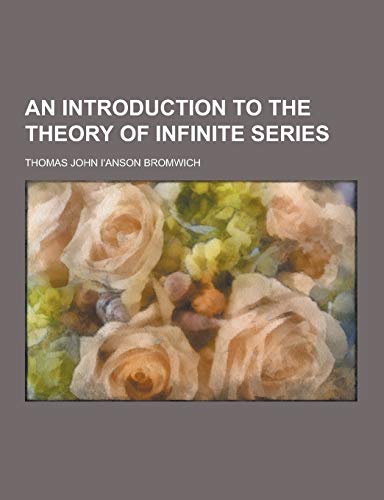Articoli correlati a An Introduction to the Theory of Infinite Series

This historic book may have numerous typos and missing text. Purchasers can usually download a free scanned copy of the original book (without typos) from the publisher. Not indexed. Not illustrated. 1908 edition. Excerpt: ...investigations. In numerical work, however, they naturally used only series which are now called asymptotic (Art. 130 below); in such series the terms begin to decrease, and reach a minimum, afterwards increasing. If we take the sum to a stage at which the terms The majority of writers on these series use the word divergent as including oscillatory Beries; we shall, however, except in quotations, adopt the same distinction as in the previous part of the book. are sufficiently small, we may hope to obtain an approximation with a degree of accurac' represented by the last term retained; and it can be proved that this is the case with many series which are convenient for numerical calculations (see Art. 130 for examples). An important class of such series consists of the series used by astronomers to calculate the planetary positions: it has been proved by Poincare that these series do not converge, but yet the results of the calculations are confirmed by observation. The explanation of this fact may be inferred from Poincare"s theory of asymptotic series (Art. 133). But mathematicians have often been led to employ series of a different character, in which the terms never decrease, and may increase to infinity. Typical examples of such series are: Euler considered the " sum " of a non-convergent series as the finite numerical value of the arithmetical expression from the expansion of which the series was derived. Thus he defined the "sums" of the series (l)-(3) as follows: (1)=i+l=J; (2)=(TTI)2=4; (3)=T+2=3; and his discussion of the series (4) will be found at the end of Art. 98 (see p. 267). In principle, Kuler's definition depends on the inversion of two limits, which, taken in one order, give a definite value,...
Le informazioni nella sezione "Riassunto" possono far riferimento a edizioni diverse di questo titolo.
- EditoreTheclassics.Us
- Data di pubblicazione2013
- ISBN 10 1230448136
- ISBN 13 9781230448138
- RilegaturaCopertina flessibile
- Numero di pagine70
(nessuna copia disponibile)
Cerca: Inserisci un desiderataSe non trovi il libro che cerchi su AbeBooks possiamo cercarlo per te automaticamente ad ogni aggiornamento del nostro sito. Se il libro è ancora reperibile da qualche parte, lo troveremo!
Inserisci un desiderata
